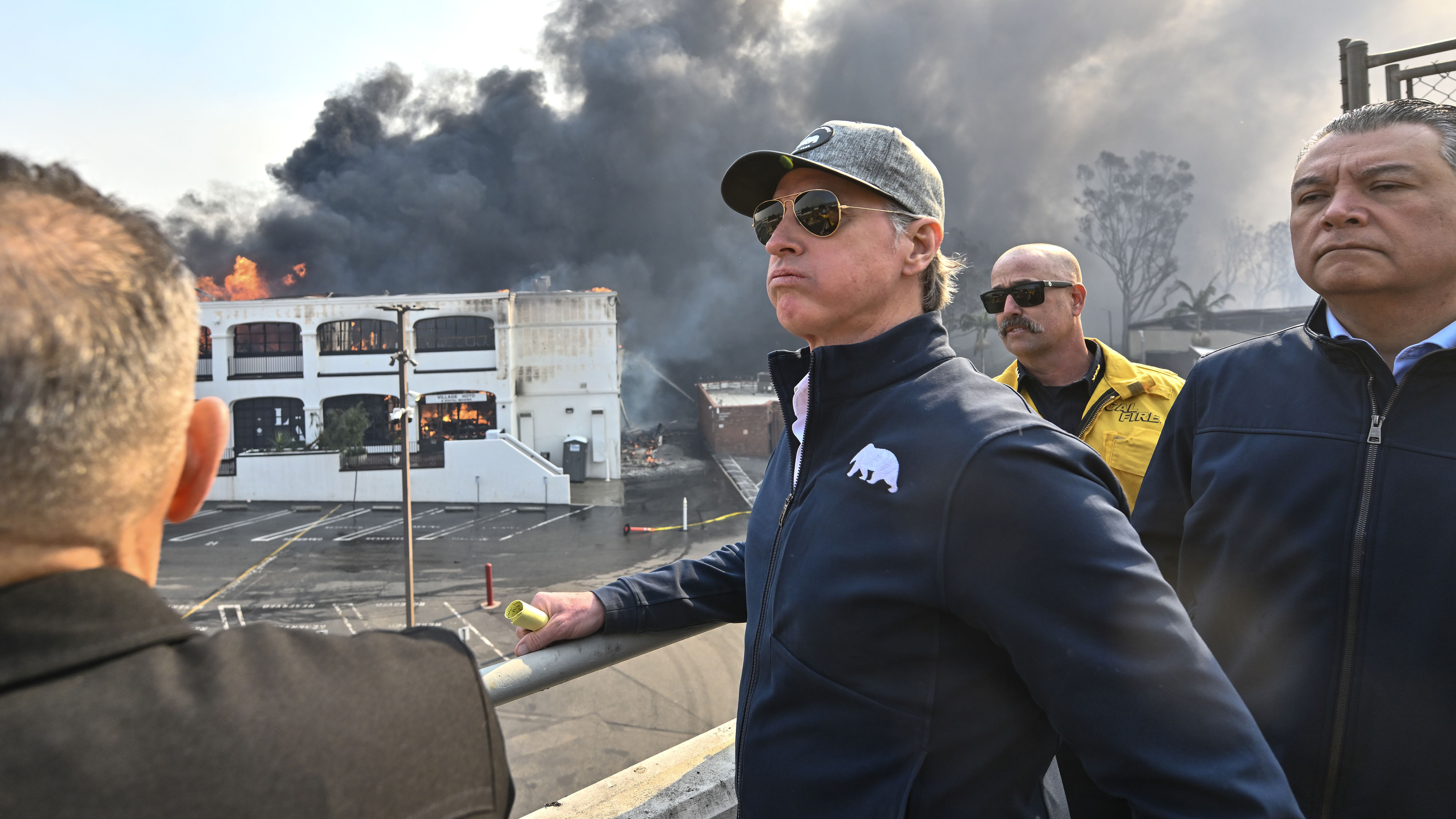Los Angeles has installed so-called cool pavement on 175 lane miles in an effort to cool down scorching streets, but some research suggests it might make temperatures feel hotter. Lolita Lopez reports Oct. 19, 2023.
Pupusa vendor Claudia Rivas works six days a week over a hot grill on a corner in Pacoima.
On days where temperatures reach 90 degrees Fahrenheit, the heat can be oppressive, but she says special "cool" pavement paint added to the street near her pupusa stand has helped make it feel less like working in an oven.
Ana Tabuena-Ruddy is the assistant director and chief sustainability officer for Streets LA, overseeing the implementation of the cool pavement across Los Angeles.
“When it's first applied on the first year, it decreases the temperature by about 8 degrees. After the first year, it kind of goes down to about 4 to 6 degrees because of just the wear and tear in all the vehicles that pass by,” Tabuena-Ruddy said.
Get top local stories in Southern California delivered to you every morning. Sign up for NBC LA's News Headlines newsletter.
“When it rains, for example, it cleans it again and it goes back up to what it originally was. It goes up and down, but it cools it by between 4 to 8 degrees,” she added.
Streets LA told the I-Team that cool pavement has been installed on over 175 lane miles across Los Angeles, covering nearly 600 street segments since it started in 2017.
The program uses a combination of general funds from the city budget, grants and state and federal funding.
Local
Get Los Angeles's latest local news on crime, entertainment, weather, schools, cost of living and more. Here's your go-to source for today's LA news.
The I-Team’s review of city data shows just how much money was allocated to these projects since 2020.
In fiscal year 2020, $3 million from the Street Damage Restoration Fee was used for cool pavement. In fiscal year 2021, $2 million from State Senate Bill 1 was used for cool pavement and trees. In fiscal year 2022, $2 million from State Senate Bill 1 was used for cool pavement and trees, and in fiscal year 2023, $4 million from Street Damage Restoration Fee was used for cool pavement.
“I think when the community needs it and wants it, that it's worth it, especially if it's paired with a tree planting,” Tabuena-Ruddy said.
A recent study by UCLA says more research needs to be done to know the real benefits, finding that while cool pavement might lower the temperatures on the surface, it might feel hotter. The study says the reason is in part “because the effect of sunlight is increased as the heat re-radiates from the pavement.”
“So there are a lot of studies out there, and some say that it makes it hotter and some say that it makes it cooler. There's no consensus on that. And so for that reason, we employ as many things in our toolkit as we can. So, we apply the cool paving, we plant the trees,” Tabuena-Ruddy said.
Cool pavement painting is now planned for other areas, including Sylmar, Boyle Heights and Fairfax.
As for Claudia Rivas, she appreciates any relief as temperatures near her papusa stand continue to be in the 80s and 90s in October. The only oven she wants, she said, is the one she cooks on.



